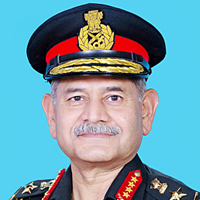INDIAN ARMED FORCES CHIEFS ON OUR RELENTLESS AND FOCUSED PUBLISHING EFFORTS

The insightful articles, inspiring narrations and analytical perspectives presented by the Editorial Team, establish an alluring connect with the reader. My compliments and best wishes to SP Guide Publications.

"Over the past 60 years, the growth of SP Guide Publications has mirrored the rising stature of Indian Navy. Its well-researched and informative magazines on Defence and Aerospace sector have served to shape an educated opinion of our military personnel, policy makers and the public alike. I wish SP's Publication team continued success, fair winds and following seas in all future endeavour!"

Since, its inception in 1964, SP Guide Publications has consistently demonstrated commitment to high-quality journalism in the aerospace and defence sectors, earning a well-deserved reputation as Asia's largest media house in this domain. I wish SP Guide Publications continued success in its pursuit of excellence.
- Indian Air Force Aims for Full Indigenous Inventory by 2047 — Air Chief Marshal A.P. Singh
- General Upendra Dwivedi takes over as the Chief of the Army Staff
- Rajnath Singh assumes charge as Defence Minister for the second consecutive term
- Admiral Dinesh K. Tripathi assumes Command of the Indian Navy as 26th Chief of the Naval Staff
- Prime Minister witnesses 'Bharat Shakti' – a Tri-Services Firing and Manoeuvre Exercise in Pokhran, Rajasthan
Unmanned tilt-rotor vertical take-off aircraft unveiled
A state-funded aviation research institute unveiled an unmanned tilt-rotor aircraft recently, making Korea one of the world’s few countries having the technology of vertical take-off and landing plane using helicopterlike rotors at the wingtips.
Currently, only a couple of countries, including US, Israel and UK, have the tilt-rotor technology or are proceeding with that kind of programmes.
The “transformer” unmanned aerial vehicle (UAV) aircraft was developed by the Korea Aerospace Research Institute (KARI) affiliated with the Ministry of Knowledge Economy in cooperation with private defense companies, a KARI official said. The UAV project started in 2002. The 5-metre-long, 7-metre-wide aircraft has a top cruise speed of 500 kmph, according to the researcher. Its flyby-wire flight control system was developed by the domestic developers while rotor and drive systems were built under an international partnership. About 20 domestic companies participated in the UAV development.
The UAV is to be used both for military and civil purposes, such as traffic controls and the prevention of forest fires as well as weather and environmental surveys, according to KARI officials.





